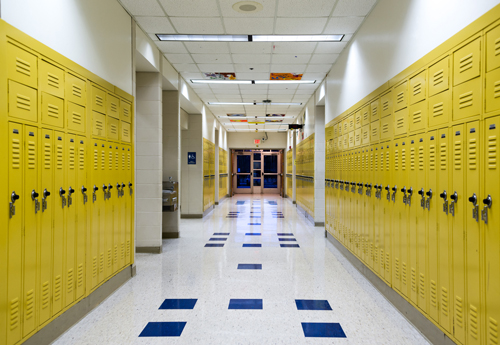American Education’s Misunderstood “Dropout Crisis”
Workers with a high school diploma have better success in the job market than those who have dropped out. According to the Bureau of Labor Statistics, individuals with only a high school diploma earned $678 per week in 2015, while individuals without a diploma only earned $493. Similarly, high school graduates (without any college) have a 5.4 percent unemployment rate while non-graduates have eight percent unemployment.
President Obama claimed in 2010 that high school dropouts are “a problem we can’t afford to accept or ignore.” In order to “end America’s dropout crisis,” he committed $3.5 billion to improve low performing schools. However, dropout rates in America have fallen steadily for over 40 years and continue to fall – hardly indicative of a national crisis. Today, less than one in 14 students drop out. Lower-income students contribute the most to the high school drop-out rate, and these low-income dropouts are concentrated in a small number of schools dubbed “dropout factories.” The true crisis that the president is referencing stems from these dropout factories and the disparity between dropout rates for low and high income students.
Nearly 11 percent of students from families in the lowest income quartile dropped out in 2013, compared to only three percent for students from the highest quartile, according to the Census Bureau. But we have made progress in this area. The dropout rate continues to fall for all income levels, but it has fallen fastest for lower-income Americans, in both absolute and percentage terms. The dropout rate for the highest-income Americans fell by 35 percent since the 1970’s. The middle quartiles have about half as many dropouts now as in the 1970s, and the lowest quartile has seen a 60 percent reduction in dropout rates. The chart below shows that the sharp reduction for lowest-income Americans has come mostly in the last ten years. Until 2003, the trends were similar across quartiles.
|
Income Level Dropout Rates (%)* |
||||||
|
Year |
Total |
|
Lowest Quartile |
Middle Low Quartile |
Middle High Quartile |
Highest Quartile |
|
1973 |
14.1 |
|
28 |
19.6 |
9.9 |
4.9 |
|
1983 |
13.7 |
|
26.5 |
17.8 |
10.5 |
4.1 |
|
1993 |
11.0 |
|
22.9 |
12.7 |
6.6 |
2.9 |
|
2003 |
9.9 |
|
19.5 |
10.8 |
7.3 |
3.4 |
|
2013 |
6.8 |
|
10.7 |
8.8 |
5.0 |
3.2 |
*dropout rate data from the U.S. Census Bureau, School Enrollment in the United States: October 2014
Recent gains may be due to an emphasis on reforming “dropout factories,” a term that describes high schools where fewer than 60 percent of freshmen graduate after four years. Dropout factories account for more than 50 percent of the nation’s dropouts, even though they represent less than 10 percent of all high schools. These schools are commonly characterized by poor leadership and poor administrative practices, such as high suspension rates, apathetic teachers, and disruptive environments.
When many students leave, a school can begin to develop a “dropout culture” where students begin to think that it is normal, or even cool, to drop out. These schools also tend to have larger percentages of students from lower-income backgrounds. For example, Theodore Roosevelt High School in New York City had a student body of more than 1500 students, and more than 80 percent of these students were eligible for free lunch because of low family income. Theodore Roosevelt High School shut down in 2006 after only 3 percent of students graduated. The graduation rate had been below 10 percent for many years before that.
Recent reforms actively target these dropout factories in the hopes of keeping more students in school. The reforms seek to reduce dropout rates by targeting the lowest performing schools while also funding programs that engage disconnected youth. For the lowest performing schools, school districts are given four options: replace the principal and a large number of staff, reopen the school under a new charter operator, transform the school’s teaching programs and teacher training, or close the school. These programs have seen results, since between 2002 and 2013 the number of students attending a dropout factory has been halved.
The “American dropout crisis” is not the national dropout rate. The crisis is the existence of dropout factories: a minority of schools where the majority of students drop out. However, the detrimental impact of these schools is falling. Dropout factories are being improved each year, and the dropout rate for the lowest income quartile has seen a sharp improvement.
Click here to sign up for the Daily Economy weekly digest!









